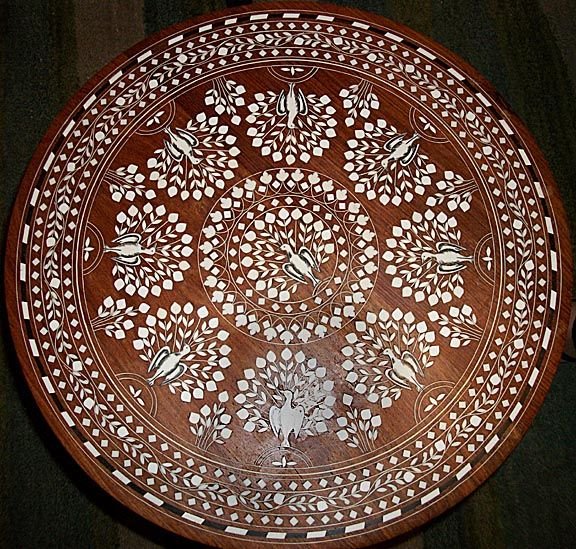
Artform of Seventeenth Century
This is my sixth article in series of incredible handicrafts, artisan of which should be celebrated. All the art forms, which bring into discussion are arts revived from their vulnerability to extinction. These art forms are geographically indicated and are the legacy of either a family or a village or a cluster of the artisan. The spread and development of these art forms were hindered due to their development within closed clusters.
Rosewood Inlay of Mysore district of Karnataka state of India is one such art. Rosewood inlay is wood inlay work where wooden surfaces are decorated by embedding them with pieces of gold, silver, bone, plastic and different color of the wood. A few centuries back ivory was used but now it is replaced with hydrogen peroxide owing to conservation of elephant. The rosewood inlay work goes back 17th century when Mysore royalty patronized it. During the reign of Tipu Sultan, rosewood inlay furniture was popularized along with exquisite artifacts.
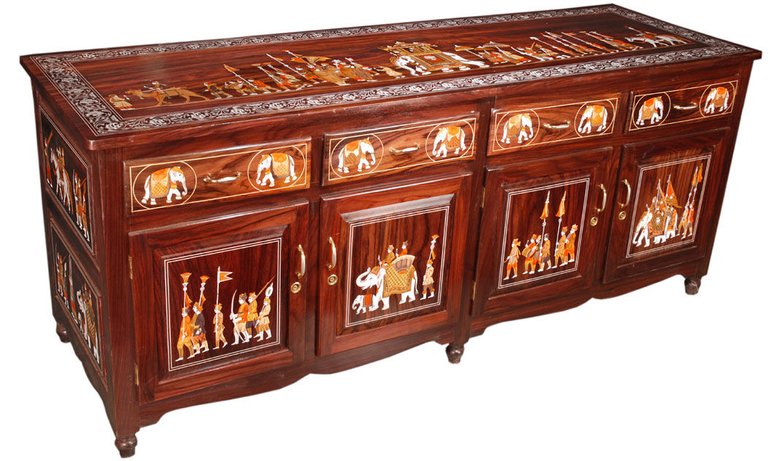
Origin and Methodology The art originated with the abundance of rosewood in close proximity to Mysore, Karnataka state has good forest reserve of Hardwood. A pioneer of the craft Shokat Ali initiated a new style, which was assimilated with inlay; he started to use wood of different colors to decorate the masterpieces. With this new technique, the craft evolved into a vibrant art. The methodology adopted is similar to various jewelry pieces. The rosewood base is smoothened the designs are traced and etched into the surface. Then into these grooves, the various inlay material like gold, silver, bone, wood are assembled and then the entire surface is polished. These designs that you can see in pictures are not colorful painting but painstakingly assembled inlay masterpieces. Each piece is mastered through the labor of several artisans. The art is a marvel of handcrafted artisans. The art is a local heritage and is greatly influenced by the culture and religion of the region. Mysore is famous for its Dussehra celebration, has become an important theme of inlay designs. The designs depict Indian deities, dances, rural landscape, flora, and fauna. On the Verge of Extinction Like several other local arts, the Mysore Inlay work is also on the verge of extinction. Presently only 4000 families of artisan are actively engaged in the craft. A more worrisome reality is the dwindling interest of the younger generation of these artisans in pursuing the craft. Several factors have contributed to this development the low return on hard worked masterpieces; the rising price of rosewood and the more promising future prospect offered by IT and Software jobs in the state. The demand-supply equation and the declining export are other factors affecting the craft. The art received geographical indication and several patents for its uniqueness and geographical origin. Yousif Ali a pioneer in this art won national award and title of Shilp Guru. 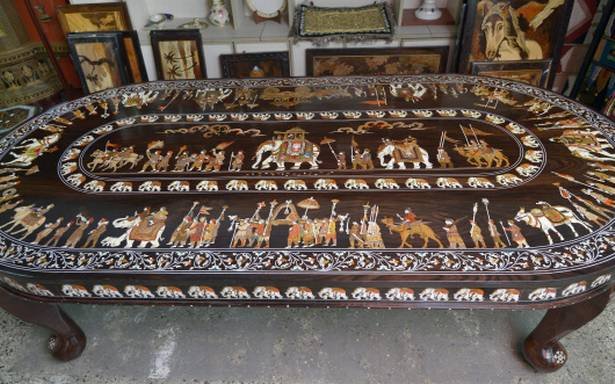
Image Source https://i.pinimg.com
http://www.thehindu.com/
http://www.waynesthisandthat.com/
https://modernpatioprojects.info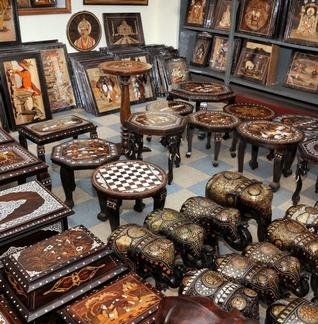
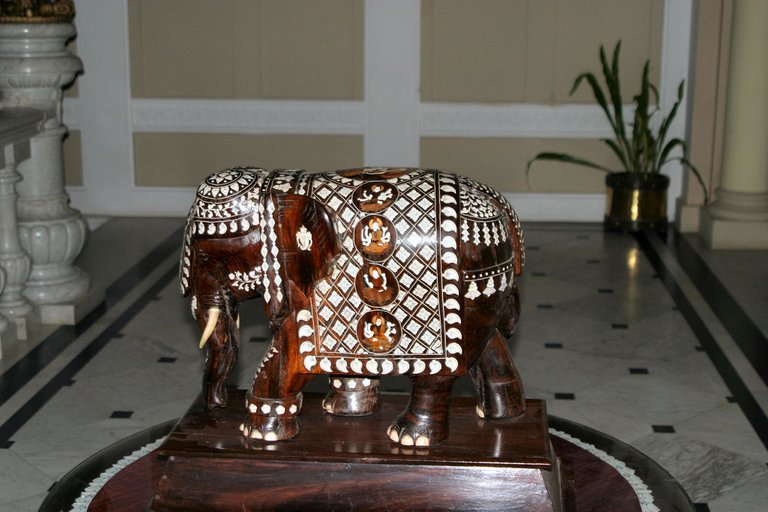
This is lovely!!
Thank you. Glad you liked it.
@originalworks
To call @OriginalWorks, simply reply to any post with @originalworks or !originalworks in your message!
STEEM WitnessYou got a 1.59% upvote from @upme requested by: @rainsa. Send at least 1 SBD to @upme with a post link in the memo field to receive upvote next round. To support our activity, please vote for my master @suggeelson, as a